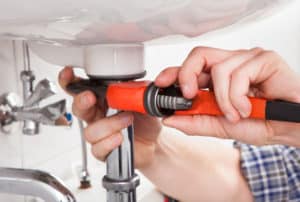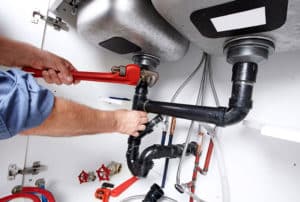





A link to download your FREE brochure will be in your inbox in 3 minutes



















The final price may vary based on project specifics.
To get a free accurate quote tailored to your needs, book a consultation with us today!

The price per square foot provided is an average and may vary depending on project-specific details such as materials, location, complexity, and other factors. Actual costs may differ from the average provided.
It is recommended to obtain a detailed quote based on the specific requirements of your project.

Please note that the monthly payment displayed on this page is an estimate and is subject to variation based on the selected loan product, applicants credit score, loan amount, and other financial details. Actual monthly payment may differ from the estimate provided.
It is recommended to seek advice from a financial advisor or loan officer to obtain precise payment information tailored to individual circumstances.
 Your Trusted
Local Contractor
Your Trusted
Local Contractor

ADU projects may be granny flats, rental units, or home offices, all of which are becoming a trend in cost-effective housing. And aside from the construction itself, such a project demands the installation of fixtures and appliances that will provide ADU residents with decent living conditions.
Similar to your primary residence, accessory dwelling units require plumbing fixtures, sewer connections, gas lines, and other utilities. Situated within your property, there may be new construction in your backyard, self-sufficient units adjacent to your main house, or garage conversions transformed from underutilized spaces.
How do you connect water, sewer, or natural gas to your secondary unit in Sacramento, California? In this article, we will explore the installation, replacement, and maintenance of essential utilities!
No matter if it’s a rental unit, a guest house, or a granny flat, your ADU project will need at least some of the numerous plumbing services.
They encompass:
Summing up, plumbing services for your ADU do not restrict themselves to water service. They also include sewer line connections and gas service, ensuring that your unit has a fully functional and compliant plumbing system to meet all your daily needs.
Some ADU projects provide you with distinct water facilities for your primary home and an accessory dwelling unit, while others feature a more integrated or joint approach.
When you connect water to the ADU, you need to understand that there are two distinct connections: one for the primary dwelling unit and another for the ADU. The pipe that carries water to the ADU links to the private water pipe before it goes to the primary residence, ensuring that the water regulator does not impact the ADU. That’s because you’ll have another separate device to control water pressure in an accessory dwelling unit.
A water meter is a city-owned device installed for billing purposes somewhere near your property. As for the water meter, it’s also convenient when it measures water consumption in an ADU separately from the main house. Some water meters even offer WiFi connections to enable you to monitor water consumption from a distance.
Accessory dwelling units may utilize the same water meter as the primary home. If, after installing water fixtures in your ADU, you need a bigger meter, you might not have to pay to increase the meter size in certain jurisdictions. However, in many cases, you’ll still need to pay fees. Besides, a larger meter may require a new tap in the street, and you’ll have to pay to install it.
Additionally, your main home and ADU may share a water line in the following cases:
Similar to the water meter, the water supply line may need a size increase because the number of fixtures has grown.

When you plan ADU construction, you typically need this number to determine the size of the pipes. The plumbing fixture count includes such fixtures as toilets, sinks with faucets, showers, and bathtubs.
All the fixtures you’ll need in your bathroom to use water, then get their respective numbers depending on how much water they consume. Next, we add up these numbers to determine how much the new part of the property will need in total. Thus, the contractor makes sure the water pipes are large enough to give the ADU all the water it needs.
Homeowners can choose to connect their ADU to an existing sewer system or create a new connection.
They may use the same sewer line in the following cases:
Like the water supply system, the sewer system may be too small to handle new fixtures, and it may require expansion, which incurs extra fees. Another way to use sewer systems is to install a new connection specifically for an ADU. This incurs the cost of an extra permit and fees for getting your ADU connected.
Before commencing ADU construction, we check where existing water pipes and sewer pipes are to decide how to install the connections. For example, a sewer exit from the ADU and a connection point may be too far from each other. Or they may be at different heights. In this case, to create a proper sewage flow, we’ll need to install a sewage pump.
Typically, for every 50 ft. of distance, the sewer line must descend 1 foot to operate without a pump. In the opposite case, you’ll have to pay about $5,000 for a sewage pump.
Most cities do not establish specific requirements for stormwater management, except that it should naturally soak into the ground without causing interference. This means it cannot go into sewers. And if you have an ADU that covers 500 sq. ft. or more of the ground surface, preventing water from soaking, you will need a stormwater treatment facility for the extra water to run off.
In terms of plumbing services for your site, gas and electricity are things it’s impossible to do without. Every homeowner knows that we use it for water heaters, stoves, fireplaces, and other appliances we need for household use.
If you haven’t moved in recently, you must have an existing service. In this case, it’s essential to make sure the gas line can handle the needs of the new structure. The gas line that supplies the ADU has a connection to the private gas service between the gas meter and the rest of the property units (the main ones). Thus, the providers measure the gas consumption for both the ADU and the main home.
In some instances, some properties have gas tanks on-site. If that’s your case, they should be at least 10 feet away from any livable building to ensure your safety and that of your property.
Very common problems homeowners face when dealing with their ADUs include troubles with plumbing and sewer systems, as getting them installed is not only complicated but sometimes very costly and time-consuming. The intricate plumbing challenges may involve substantial excavation on the site and great installation efforts to link the new ADU unit to the sewer line. Also, obtaining permits if a new plumbing solution is necessary, as well as ensuring compliance with local building codes and the necessity to repair them.
All in all, the plumbing connection process is not an easy one, so a good contractor that provides homeowners with quality and cost-effective services is something this ADU construction stage cannot do without.
An ADU is an accessory dwelling unit, which is a smaller subsidiary unit on your site. It can adjoin the main residence, sharing a wall with it, or be fully independent of it. It is a self-contained living space that includes amenities such as bathrooms and kitchens, which necessitate separate plumbing connections for clean water supply and wastewater disposal.
In many cases, ADUs can share the existing sewer line with the primary unit on the property. However, some cities and counties pose stricter limitations on the sewage system. For example, if you have too many fixtures, the sewer line just won’t be able to support them all. In this case, you’ll either need to enlarge the existing one or create a separate one.
An ADU bathroom is a room that resembles one in the main residence but usually in smaller dimensions. Thanks to its smaller scale, it may have a lower cost. However, an ADU project may require extra plumbing services that frequently require earthwork and a complex permitting process.
This question depends on the city’s rules and regulations. In some areas, ADUs indeed mandate separate electrical panels to promote the safety and security of electrical wires, as well as to provide adequate support for the extra electrical load of the ADU unit. Besides, if there’s an issue with the electrical supply in the main house, a separate electrical panel for an ADU creates better flexibility. In this case, you won’t need to rely on one source if disruptions happen.
Get a First Look at Real ADU Projects